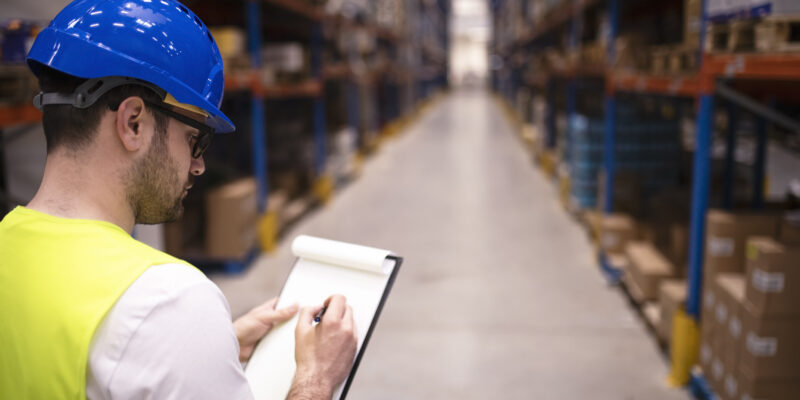When it comes to warehouse safety, several elements are typically disregarded. While we have addressed warehouse safety themes in past postings, this time around we opted to touch on the topic of forklift safety. Forklifts are important to warehouses but may be highly dangerous when operated incorrectly.
A forklift weighs the same as a bus. If not used appropriately, its hefty and pointed arms can cause catastrophic damage to slotted racks, goods, and persons.
Some of the forklift hazards are
- Unsecured goods may collapse and crush people or drivers.
- Due to excessive speed or unbalanced loads, forklifts may tip over.
- Workers may trip if they stand on the forks.
- Drivers may not see pedestrians, resulting in crashes and tragic incidents
- Forklift and pedestrian collisions may result from improper or absent floor marking.
Forklift Safety
Forklift accidents are among the most catastrophic sorts of accidents in warehouses owing to the sheer size of the vehicle and the fact that it works in such close proximity to workers. Following are a few forklift truck tips to follow for regulatory compliance and accident prevention:
Skilled and certified persons should only operate forklifts. They should be educated about pedestrian safety. Forklift operators must inspect the vehicle at all times to ensure it is not overloaded. Before driving a forklift, the driver must inspect the path for risks and impediments. Any debris lying on the floor should be removed to clear the passage. When people cross the specified route, the forklift driver should come to a halt. Also, if there isn’t enough room on the floor, alert the pedestrians and request that they relocate. PPE is also necessary for forklift drivers (Personal Protective Equipment). During operation, the driver must wear his or her seat belt.
Travelling at an excessive pace can increase the probability of a driver losing control of the vehicle and result in forklift turnover, collisions, and collide with personnel and industrial storage solutions. As a result, staff should never exceed 5 mph and should slow down in busy areas. When refilling the forklifts, the engine should be shut off. There should be no open fires, sparks, or smoke in the immediate area.
Employees and employers should collaborate to ensure that forklifts are used safely. Before utilising a forklift, follow these instructions.
- Conduct a daily inspection of all forklifts in operation.
- Check the tyres and oil levels.
- Check that the forks are straight and not broken.
- Check the brakes, lights, horn, and steering wheel.
- Look for possible risks like impediments, uneven surfaces, overhanging obstacles, and other potential hazards.
Hazard Communication
Warehouse owners should develop and implement a documented Hazard Communication (HazCom) protocol, and warehouse personnel who may be exposed to hazardous substances should be aware of their hazards and know how to protect themselves. A hazard communication protocol should be created when handling hazardous chemicals in a warehouse or storage facility.
Effective training on identifying chemical hazards, proper handling, storage, and disposal of chemicals, and the use of the proper PPE should all be included in the hazard communication programme (personal protective equipment). To ensure warehouse safety, employees and management teams must be knowledgeable about how to conduct better safety inspections and how to handle and store hazardous chemicals.
Summary:
When it comes to warehouse safety, several elements are typically disregarded. Forklifts are important to warehouses but may be highly dangerous when operated incorrectly. Unsecured goods may collapse and crush people or drivers. Forklift and pedestrian collisions may result from improper or absent floor marking. Employees and employers should collaborate to ensure that forklifts are used safely. Before driving a forklift, the driver must inspect the path for risks and impediments. When people cross the specified route, the forklift driver should come to a halt. PPE is also necessary for forklift drivers (Personal Protective Equipment).


